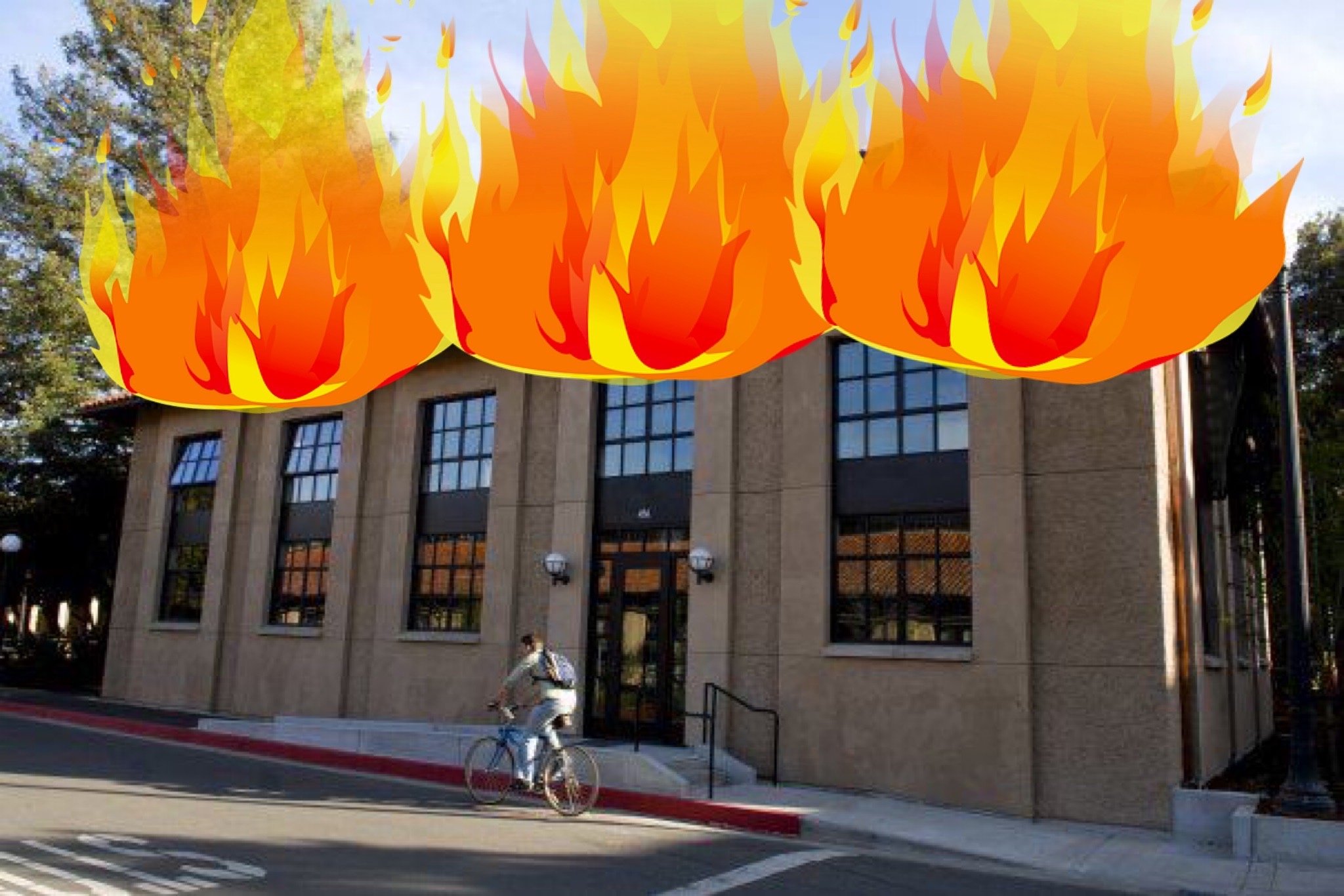The Stanford Daily has been cited by the Stanford University Fire Marshal’s Office for distributing “highly flammable and hazardous materials across campus.” Referring to the “Amazon rainforest’s worth” of unread copies of the (esteemed? occasionally relevant?) publication that litters campus, the official citation comes after yet another close call with a dorm fire involving the newspaper.
“I was just trying to get lit, and all of sudden, next thing I know, Uj is about to burn down!” explained an anonymous student at the site of the incident.
While attempting to “lighten up” the dorm, stray sparks from a student accidentally lit a copy of The Daily on fire, starting a chain reaction that quickly threatened to claim the dorm, which has had two other fires in the past year.
“We had no idea there were that many copies of The Daily here, but I guess it makes sense. No one reads or gets rid of them, so they just kind of stack up,” a staff member explained. “Honestly, now that I think about it, the last time I’ve seen so many copies of The Daily disappear is when we had our last two fires.”
Okada staff members disagree with the Fire Marshal’s assessment. One Residential Assistant (RA) said, “Oh no, they’re totally right about it being a fire hazard, but that also has its advantages. Like the last time we made Korean BBQ, it really came in clutch! Those papers got the grill lit faster than lighter fluid. Now we actually actively keep issues around for the next time we’re grilling.”
Stanford’s journalism faculty did not have as cheery an outlook on the citation. A faculty member who wished to remain anonymous responded to a request for comment saying, “I mean flammable or not, I think we can all agree that The Daily is a hazardous material. Half amateur rejected Buzzfeed pitches, half overly pretentious elucidation of trite observations — it doesn’t take a mathematician to realize there’s no room in that pamphlet for real journalistic value.”
The School of Earth, Energy, and Environmental Sciences also expressed their concerns about the citation: “For some time now, we’ve been trying to isolate the key factors in Stanford’s environmental impact, and have always been stuck on a mysterious final term in the equation. This term is linked to wildfires, massive paper refuse and an overpowering lack of relevance. This may finally be that missing factor.”
When asked about the potential consequences of further distribution of copies of The Daily, the school recommended that the print copies be replaced with town criers at each dorm.
The Daily did, in fact, respond to a request for comments, supplying many, most of which cannot be printed. The Daily also warned the fire marshal that they check under their pillow for stray flammable copies tonight. In response to Stanford’s School of Journalism, The Daily said they had no regrets in rejecting a certain faculty member’s undergraduate application in ’88, and that it was the only rejection they had on record. Finally, in response to all other “haters,” The Daily suggested they [redacted].
On a more conciliatory note, to the larger Stanford community, The Daily announced it started a partnership with Chase Bank to look into strategies for responsibly eliminating unread paper content, including newspapers as well as $650 When You Sign Up Today Credit Card offers. With these initiatives, it hopes campus will become a safer — even if less informed — place.
Editor’s Note: This article is purely satirical and fictitious. All attributions in this article are not genuine and this story should be read in the context of pure entertainment only.
Contact Ayush Pandit at apandit ‘at’ stanford.edu.
